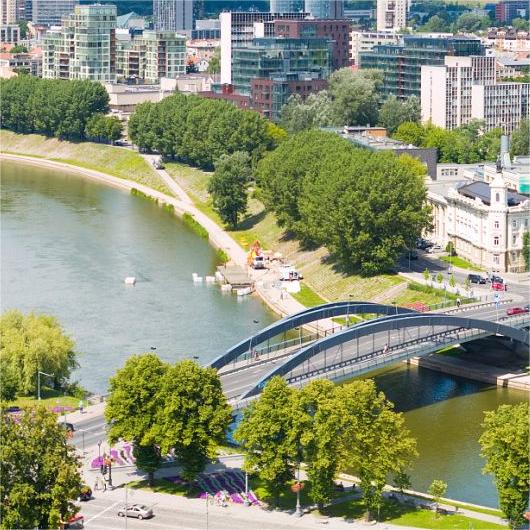The application of Sponge City concept can effectively alleviate the pollution situation in industrial parks, and guarantee and enhance the economic and ecological benefits of industrial parks. The following is a brief discussion by the Architecture Planning and Design Research Center on the specific application of the Sponge City concept in the design of industrial parks.
1. Green roofs
Green roofs make the roofs of buildings much greener. The so-called green roofs are roofs covered with soil or planted with suitable potted plants suitable for local climates, which can absorb, store, filter and purify water, as well as slow down the runoff from the roofs and the ground. At the same time, in order to reduce the damage caused by the impact of building rainwater pipes on the ground surface vegetation, a rainproof mat with a size of 0.6m×1.2m is laid under the rainwater pipes to reduce the impact of rainwater and spread it to the surroundings at a relatively mild speed.
2. Sunken Green Space
In a narrow sense, sunken green space refers to an area that is lower than the surrounding ground or lies 200 millimeters below the road surface. In a broad sense, sunken green space refers to green areas that have certain adjustment capacity and can regulate and purify runoff rainwater. These areas include rainwater gardens, green planting trenches, and biological retention facilities. Rainwater from the roofs and roads of the plant area first flows into the lower green area.
Sunken green spaces can effectively infiltrate and store rainwater, alleviate the drainage pressure of urban sewage pipes, reduce the net flow of the city, effectively purify the urban runoff rainwater, supplement groundwater, and reduce floods. In the event that the rainfall intensity exceeds the load-bearing capacity of the sunken green space, excess rainwater flows into the city’s drainage system through drainage holes. Combined with the location of the factory, the timing of planning and construction, terrain, and other factors, compound sewage treatment facilities such as rainwater gardens can be constructed.
3. Micro ecological Filter Bed
After the rainfall is settled, it flows into the reservoir and then into the micro ecological filtration pool for treatment. The treated water then flows into the clear water tank for green irrigation. The reservoir and clear water tank are built on the ground with a barrier in between to form a flood discharge channel. The micro ecological filter bed processes a certain amount of rainwater every day, and there will not be any excess clear water flowing into the reservoir within a day. The entire system is fully automated and, in addition to beautification, can also serve as a sewage treatment unit.
Through the functions of filtration, sedimentation, and biology, collected rainwater is further treated to better adapt to environmental loads. On this basis, we will make full use of existing equipment and combine it with landscape design ideas to create a green and ecological factory and achieve energy-saving purposes.
